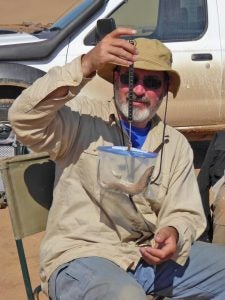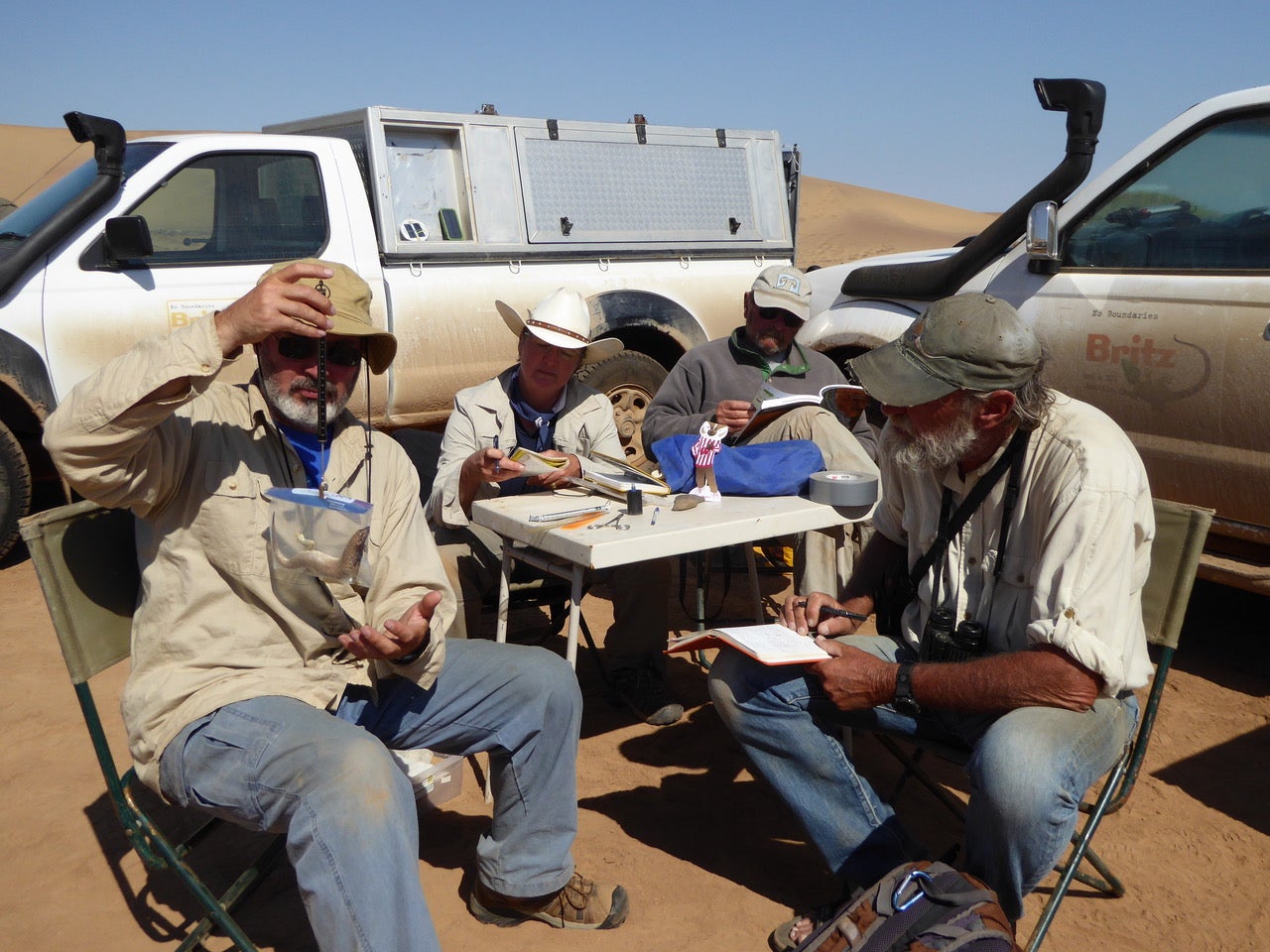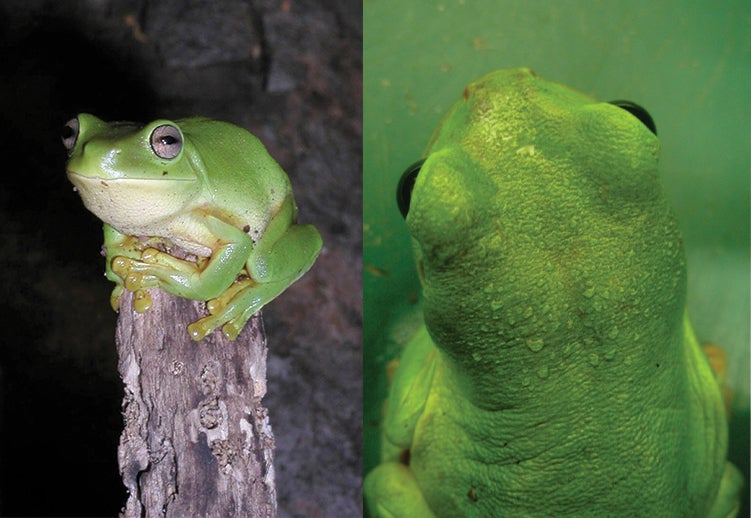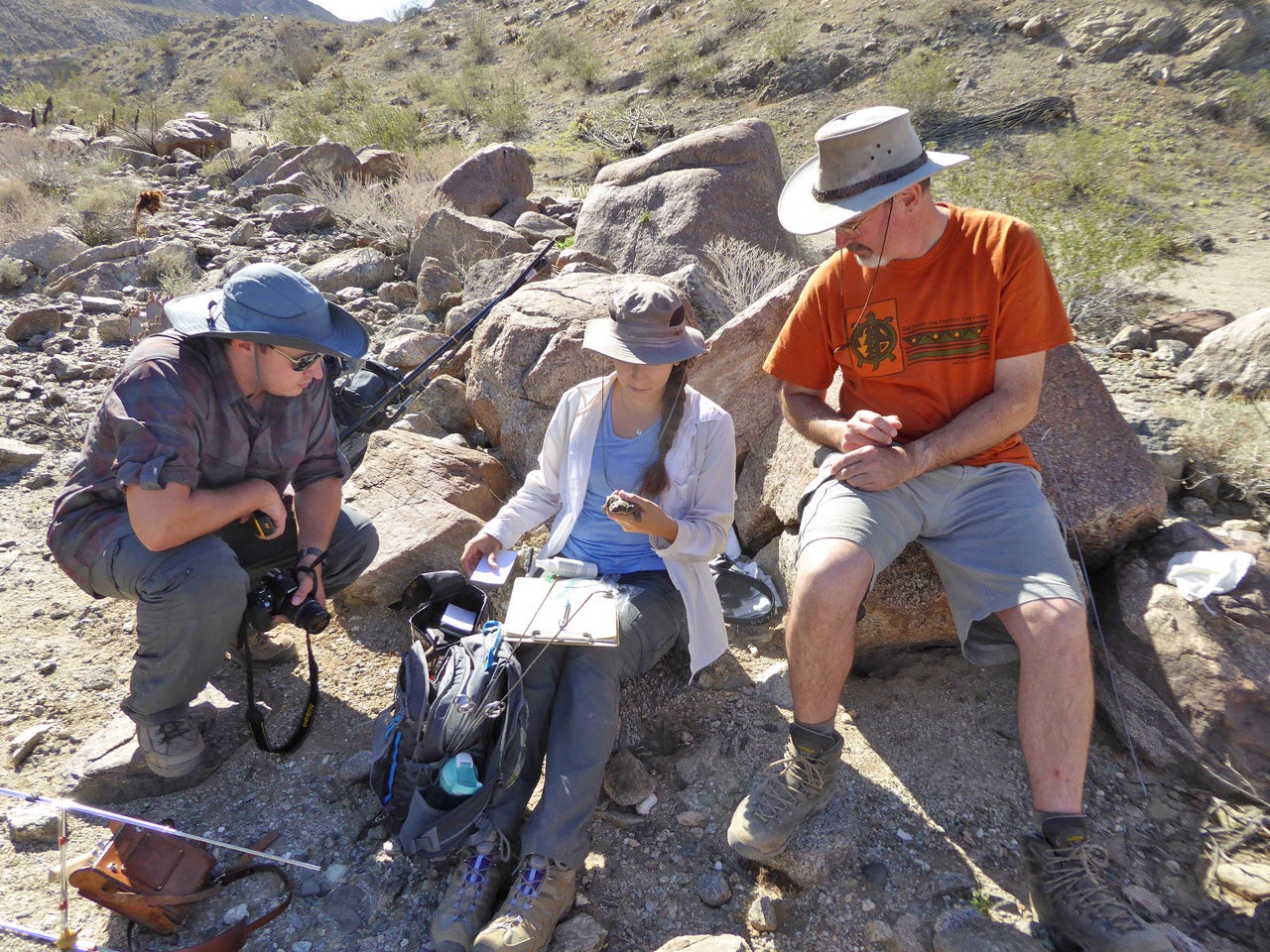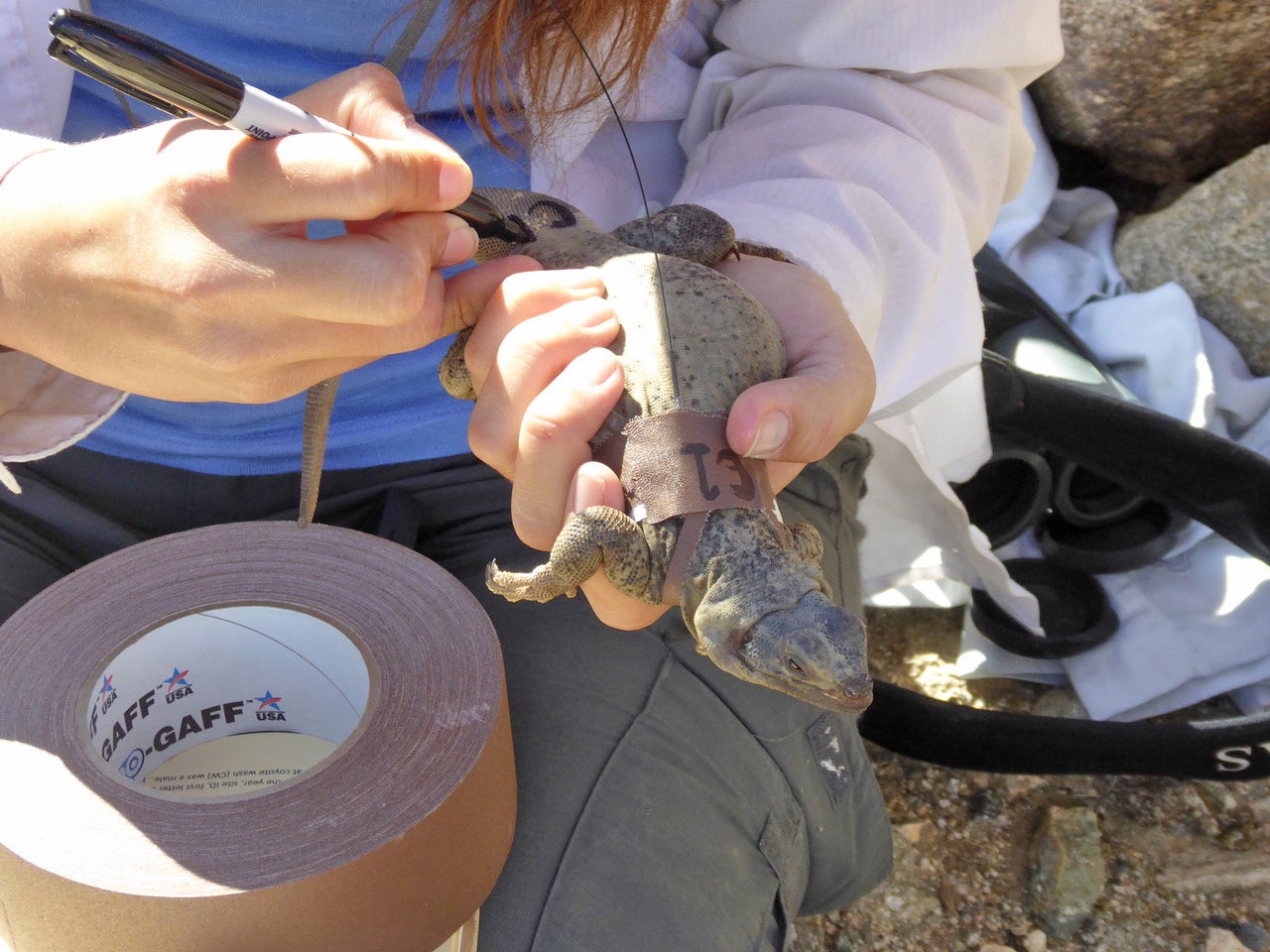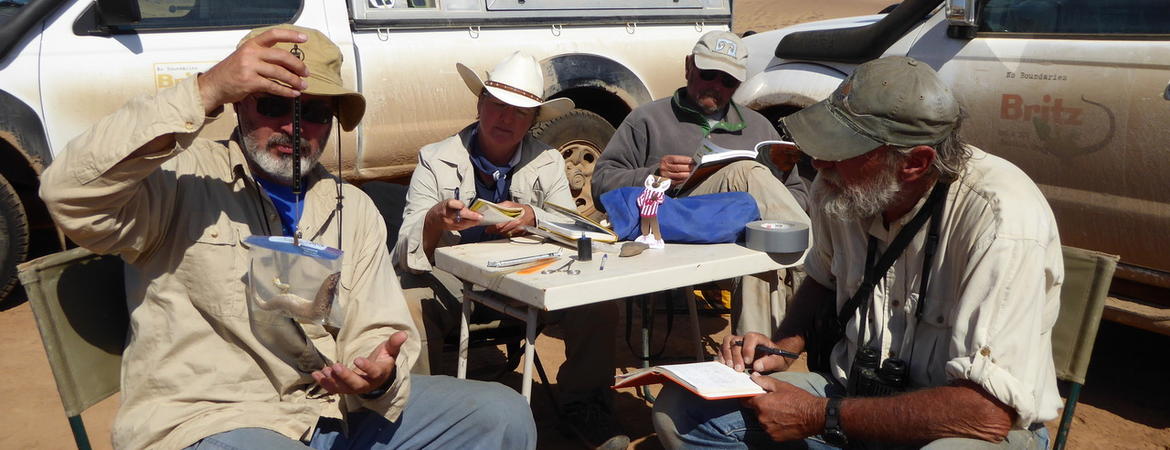
Christopher Tracy, new director of Boyd Deep Canyon Desert Research Center, weighs a desert plated lizard (Gerrhosaurus skoogi) along the Skeleton Coast of Namibia. Image courtesy Christopher Tracy.
For the first time in 35 years, a new director is at the helm of the NRS’s Boyd Deep Canyon Desert Research Center in the Coachella Valley. An expert in the physiological ecology of reptiles and amphibians, Christopher Tracy has years of experience chasing lizards and teaching in Australia, Africa, and the United States. His research subjects have ranged from Australia’s saltwater crocodile, the world’s largest reptile, to frogs the size of a dime.
Leading Boyd Deep Canyon represents a major change of pace for Tracy. “One of the fun things about being a scientist is the kind of research you do can influence how people think about the world around them. As director at Boyd, instead of talking to classes full of students, I can talk to the general public or with university administrators who are able to set aside resources to promote research,” Tracy says.
A keen observer of wildlife, Tracy looks forward to immersing himself in the natural rhythms of the reserve. “The chance to live among some of the animals I’ve been studying is awfully exciting. I can be right there watching these animals do their thing,” he says.
Tracy comes to the NRS after four and a half years as an assistant professor of biology at California State University, Fullerton, and eleven years in research and teaching positions at Charles Darwin University and the University of Melbourne in Australia.
A dedicated field researcher, Tracy has put in plenty of time studying how wild reptiles and amphibians meet their water and temperature needs, especially in extreme environments like deserts.
One of such place is the wet-dry tropics around Darwin, Australia, which might as well be a desert for much of the year. Inundated by 12 or so feet of rain between December and April, the region receives not another drop over the next eight months.
Tracy and colleagues noticed Australian green tree frogs (Litoria caerulea) native to the area indulging in some peculiar behavior. At the height of the dry season, frogs emerged from their tree hollow shelters in conditions so cold they could barely move. The scientists couldn’t figure out why until they noticed when the animals were acting this way: on chilly nights that left a sprinkling of dew across the land.
“The frog itself would get pretty cold, then go back inside its warm hollow and get water condensing on its body,” Tracy says. Because frogs can absorb moisture from their skin, “for them it was just like a cold drink on a hot day.”
Tracy has also done lizard research with former Deep Canyon director Allan Muth. Their work has examined temperature regulation in both Namibian sand dune lizards and chuckwallas at Deep Canyon.
In the case of the chuckwallas, previous studies of captive lizards indicated both males and females prefer a similar body temperature. But in the wild, males spend most of their time atop rock piles defending their territories, while females hide in crevices to avoid unwanted suitors and predators. Tracy and Muth were curious as to whether both sexes were able to attain their preferred temperature despite these very different behaviors.
To find out, the researchers outfitted reserve chuckwallas with temperature sensors and location transmitters affixed to vests made from gaffer tape. After a season of observing the lizards in action, they had their surprising answer.
“Both sexes were equally good at coming to their preferred body temperature, despite having different strategies,” Tracy says. “We think females are really good at finding little microclimates, going under rocks in full sun where the crevice below is nice and warm. And males adjust their posture so their whole body isn’t blasted by the sun; they can position themselves into the wind to cool a bit.”
Tracy stepped into the director’s position at Deep Canyon in July, when Muth retired. Though his tenure in one of the hottest spots in California began at the height of summer (July temperatures at the reserve average 102 degrees Fahrenheit), Tracy’s not boggled by Coachella Valley thermometer readings.
“Having done all my PhD work in the Mojave, and having lived in the tropical part of northern Australia, temperatures at Deep Canyon don’t frighten me too badly,” Tracy says.
As director, Tracy aims to continue a number of long-term projects in and around the reserve. These include Coachella Valley fringe-toed lizard population monitoring, and continuing Deep Canyon biological surveys. He will also see to completion a new multipurpose building as well as improvements to the reserve campground, both funded with matched Proposition 84 funds.
“Al spent a big chunk of his life getting Deep Canyon up and running really well. I feel he set me and the reserve up in such a way that it can deal with me spending awhile figuring out what he did for the last 35 years,” Tracy says. “There’s a lot to learn.”
